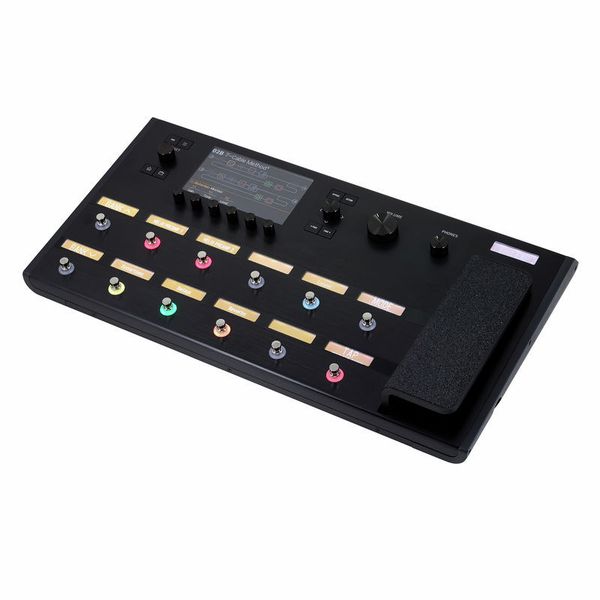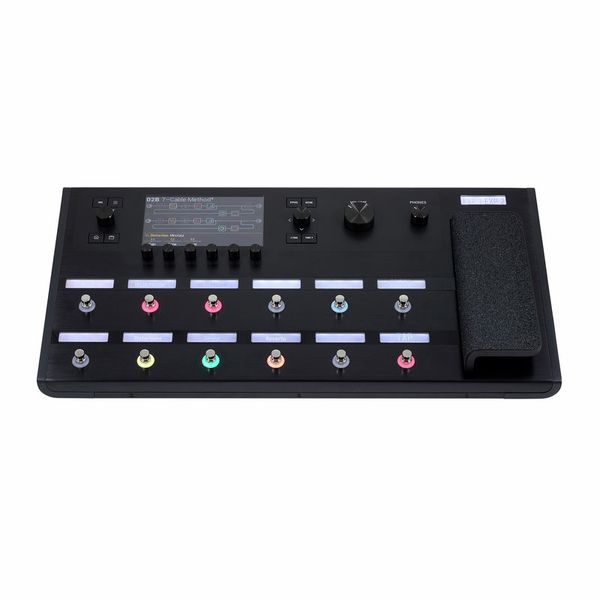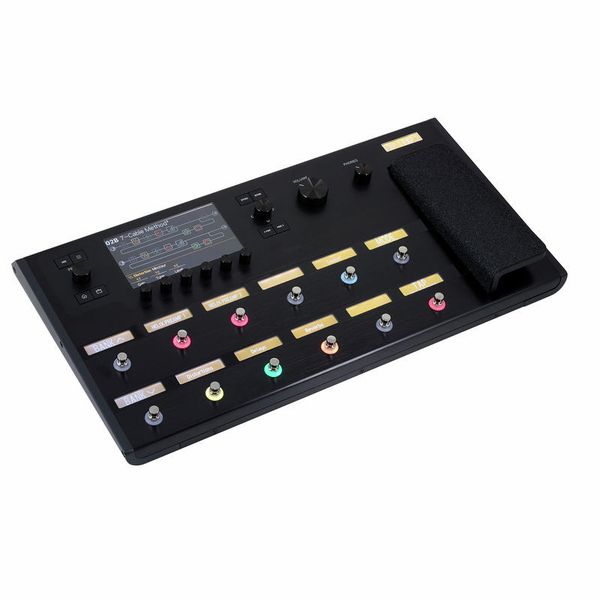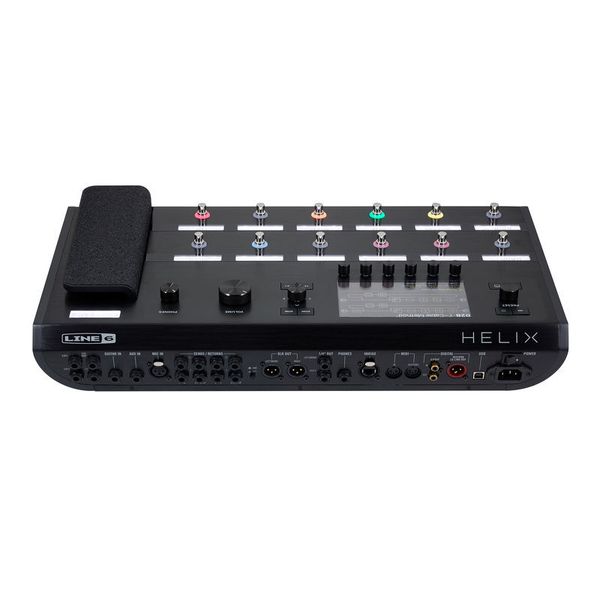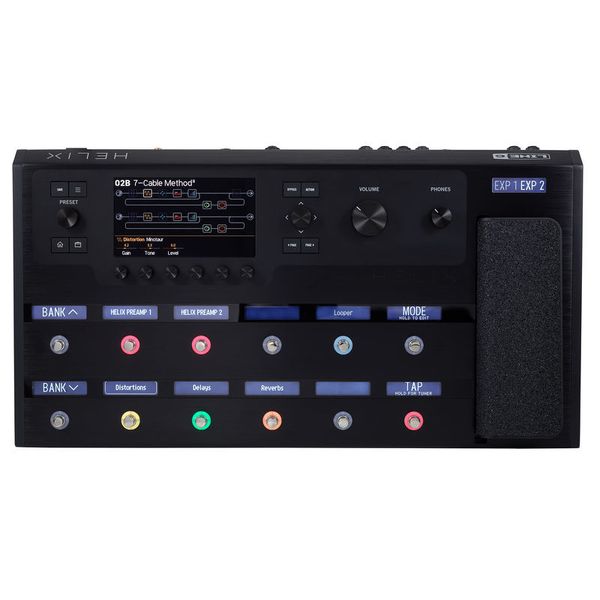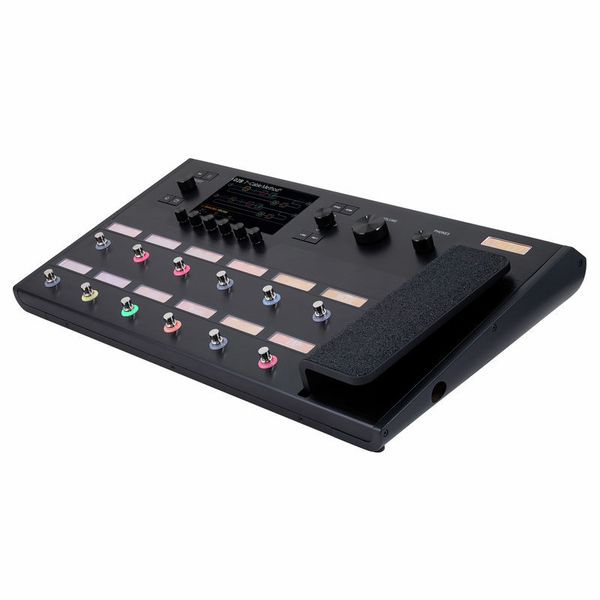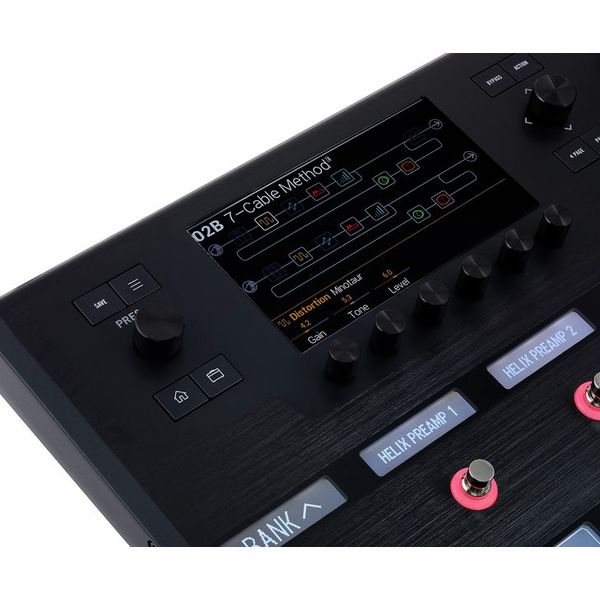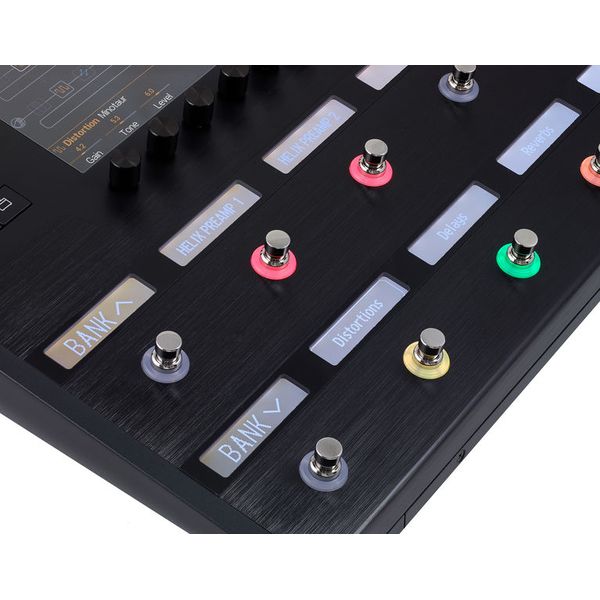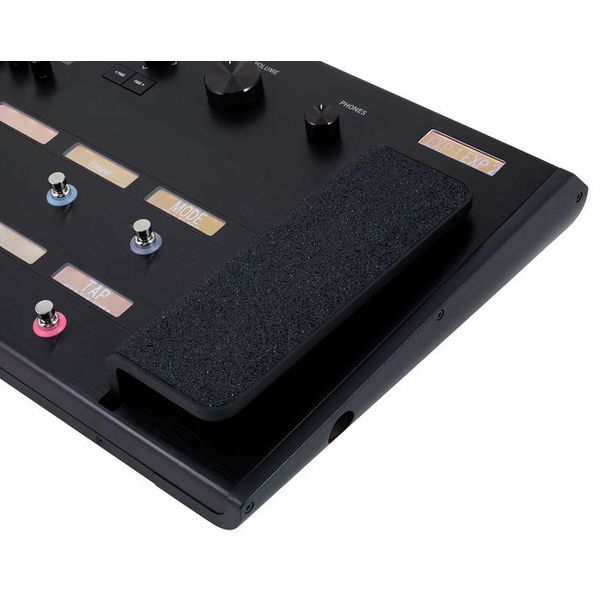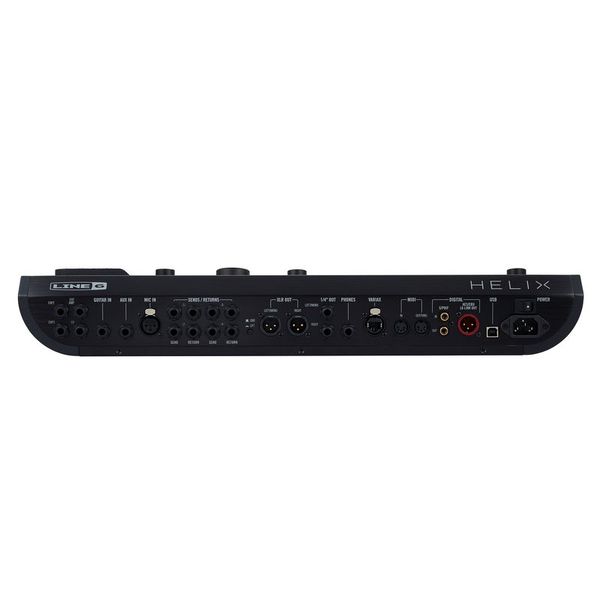Zunächst ein kurzer Überblick über meine Anforderungen und meinen Werdegang:
Ich bin das, was man einen Bedroom-Gitarristen nennt, d.h. ich betreibe das Gitarre spielen als reines Hobby. Angefangen habe ich vor etlichen Jahren mit einem Boss GT-10, habe einige Zeit danach auf einen Röhrenamp (Hughes&Kettner Switchblade 50) umdisponiert. Irgendwann habe ich mir einen AXE-FX II zugelegt, den ich bis heute verwende. Zwischendurch wurde dann just for fun ein Engl Invader II angeschafft.
Bei aller Liebe zu Röhrenamps - sie haben erhebliche Nachteile. Groß, Schwer, Sound ist Abhängig von Lautstärke, verwendet verschleißende Röhren und i.d.R. kommt ein Rack oder ein Pedal Board dann auch noch dazu was mit aufwendigem Setup und nicht zu unterschätzendem Kabelsalat verbunden ist. Es lassen sich meist auch nicht alle Parameter mit einem Fußtaster abrufen, d.h. man geht eigentlich immer irgendwelche Kompromisse ein und letztenendes hat man umso mehr Zeugs rumstehen, was man auch regelmäßig abstauben muss. :-)
Multieffektgeräte wiederum vereinen alles in einem, meist scheitert es aber entweder an viel Menü-Gefummel und/oder mittelmäßigem Sound.
Nun liefert der AXE-FX II eine beachtliche Leistung allerdings ist dieses Gerät mit einem erheblichen Programmieraufwand verbunden, was die Freude daran doch oftmals schmälert. Optimal hätte ich immer gefunden einen Bodenmultieffekt (weniger Geräte) mit Farbdisplay (wie man es längst von sämtlichen Keyboards kennt) und mit Displays beschrifteten Fußtastern, wie man es auch auf den FAMC Liquidfoot-Midi-fuß-controllern findet. Und wie auf Bestellung lieferte mir Line 6 eben dieses Gerät - Grund genug das Teil zu testen.
Bedienung:
Es gibt acht fix zugewiesene Tasten wo es durchaus Sinn macht dass sie da sind. Zusätzlich dienen die Potis unter dem Display als flexible Tasten wobei die Funktion am Display angezeigt wird. Es ist also immer nur das da was man braucht - super. Die Bedienung ist dermaßen intuitiv dass es schon fast absurd ist. Wenn man sich da einmal durchklickt, kennt man das Gerät innerhalb weniger Minuten in- und auswendig. Zu den Effektparametern gelangt man schnell und unkompliziert wenn man den zugewiesenen Fußtaster berührt. Es wurde sogar darauf geachtet dass man die Fußtaster mit dem Finger drücken kann, ohne den zugewiesenen Effekt am Bildschirm aufzurufen. Es wurde scheinbar nichts dem Zufall überlassen. Selbst die Texteingabe wurde genial realisiert.
Für erweiterte Funktionen wie MIDI-Programmierung oder Fußtasterzuweisung muss man nicht lange suchen und schon gar nicht irgend eine Gebrauchsanweisung durchblättern.
Bzgl. der Bedienung setzt das Teil (endlich) neue Maßstäbe und realisiert technische Möglichkeiten, die eigentlich schon längst zur Verfügung gestanden wären. Von daher eigentlich eine späte Entwicklung die in ihrer Umsetzung voll überzeugen kann.
Features:
Von der Hardware her, vier Effektloops - eine sehr gute Idee. Der Mikrofoneingang verfügt über 48V Phantomspannung (habe schon schlimmes befürchtet weil es nirgends angeschrieben steht ob der das hat). Von der Software her lässt er wenige Wünsche offen. Er hat zwar eine ganze Ecke weniger Amps, Cabs und Effekte die sich nicht annähernd so weit anpassen lassen wie beim AXE und verfügt auch über keinen 4x12 Grid womit sich die Effekte komplett individuell "verkabeln" ließen, allerdings ist fraglich ob man das wirklich auch alles verwendet.
Sound:
Beim Sound scheiden sich die Geister. Ich habe schon Leute auf Youtube schreiben sehen, sie wären von Fractal auf Line 6 gewechselt weil sie den Sound besser fänden. Generell würde ich sagen, dass Line 6 - Da macht auch der Helix keine Ausnahme, eher in die hellere Ecke geht. d.h. Clean-Sounds, Crunch bis hin zum High-Gain macht er ganz ordentlich und klingt durchaus authentisch. Wo er seine Probleme hat ist im unteren Frequenzbereich, d.h. wenn man eher seidigere "wet" Töne haben möchte wo man den Bass rauf und die Höhen/Mitten runter dreht, dann stößt man mit dem Teil auf seine Grenzen.
Je mehr man in die unteren Frequenzen kommt umso mehr erzeugt der Helix einen seltsamen Synth-artigen Sound der nicht mehr viel mit einem Röhrenverstärker gemein hat. Vom Sound her besteht also durchaus noch Luft nach oben. Ich würde diesbezüglich einfach empfehlen das Teil anzutesten. Wenn einem der Sound zusagt dann würde ich auf jeden Fall den Helix dem AXE vorziehen, einfach weil die Bedinung um so viel besser gelungen ist.
Verarbeitung:
Das Gehäuse an sich ist sehr solide verarbeitet. Die Bedienelemete machen da weniger den Eindruck. Ich würde jetzt nicht unbedingt gegen die Potis kicken oder am Bildschirm rumtreten. Alles in allem verhält sich das Gerät in seinem Design und seiner Beschaffenheit sehr Wohnzimmer- oder Studio-tauglich.
Für Live-Anwendungen würde ich es nicht verwenden wollen, schon alleine deshalb nicht, weil das Expression-Pedal durch einen Schlitz im Gehäuse durchragt. Wenn man sich das genauer ansieht dann sieht man durch den Schlitz die Platinen schön grün hervorstechen. Es ist auch auf der Unterseite des Gehäuses keine Öffnung wo etwa Flüssigkeit ablaufen könnte, d.h. wenn da jemals Bier drüber laufen sollte, dann wars das wahrscheinlich mit dem Gerät. Für den Live-Betrieb würde ich dann eher auf die Rack-Variante und den dazugehörigen Fußcontroller zurückgreifen.
Um noch ein paar Worte über das Expressionpedal zu verlieren: Das hat einen weiten Betätigungsweg und ist nicht all zu leichtgängig. Für meinen Geschmack super gelungen.
Fazit:
Der Helix liefert ein durchaus überzeugendes Gesamtkonzept mit hohem Spaßfaktor, welches in der Benutzerfreundlichkeit garantiert neue Maßstäbe setzt. Der Sound ist nicht schlecht und er spielt sich relativ authentisch, es gibt aber durchaus noch besseres. Von der Verarbeitung und vom Design her richtet sich das Teil wohl eher an Home- oder Studio-Anwender.
UPDATE:
Die Sounds lassen sich um einiges verbessern, wenn man ImpulseResponses (etwa 3 Sigma Audio) verwendet, anstatt der Werk-Cabs. An den AXE kommen sie aber dennoch nicht heran.
Das Firmwareupdate auf 2.01 hat einige sehr nützliche Funktionen gebracht, wie etwa die "Snapshots" (das Pendant zu den "Scenes" bei Fractal Audio), verbesserten Tuner etc.
Das Update selbst ist allerdings um einiges aufwendiger als bei Fractal Audio (schon alleine von der Line6-Website her). Wenn es dann aus irgendwelchen Gründen fehlschlägt und Firmware auf dem Gerät dann praktisch schadhaft und damit unbrauchbar ist, springt der Helix automatisch in den Update-Modus (sehr schlau gelöst), wodurch man das Update nochmal versuchen kann, anstatt dann das Gerät einschicken zu müssen.



